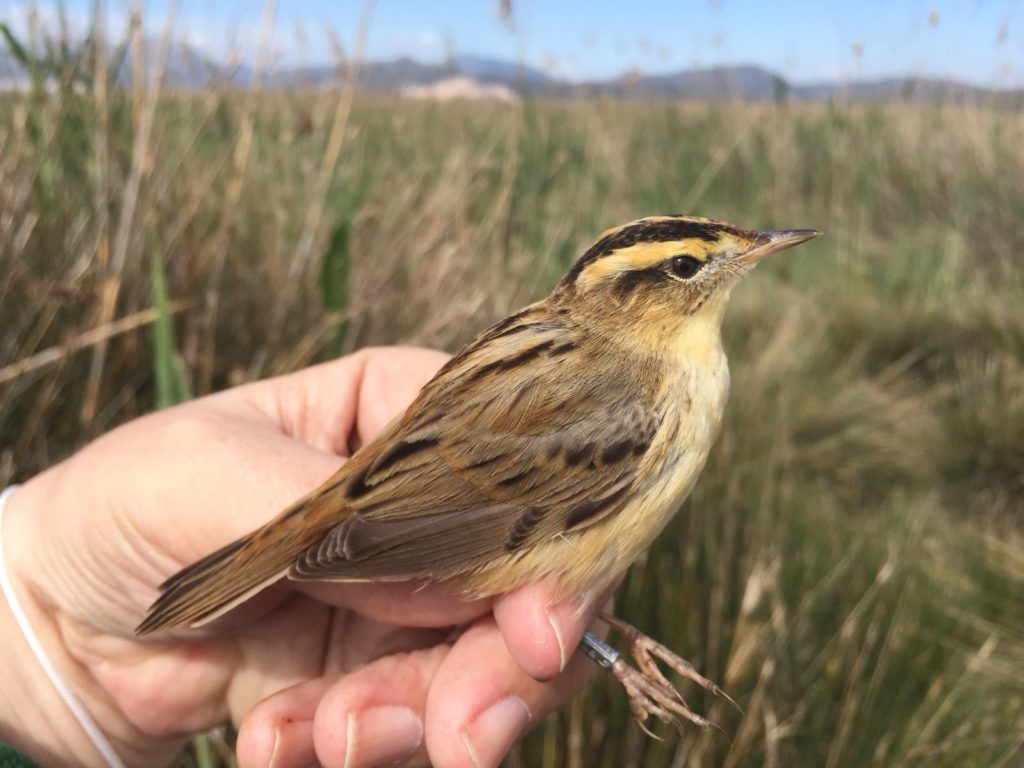The first scientific bird-ringing campaign of the LIFE Paludicola project took place at the end of April, with the objective of getting to know different aspects about the biology of the migrating passerine marsh populations that use these wetlands as feeding and resting grounds during their spring migration.
The work took place in five wetlands of the Comunidad Valenciana: Marjal de Pego-Oliva, Tancat de La Ratlla (l’ Albufera), Marjal de Rafalell i Vistabella, Marjal dels Moros, and Prat de Cabanes-Torreblanca, from April 7th to 24th of 2018. Over the 72 workdays, 739 birds of 42 species were caught. The most abundant species were the willow warbler (Phylloscopus trochilus), the Eurasian reed warbler (Acrocephalus scirpaceus), and the moustached warbler (Acrocephalus melanopogon), a small population that utilizes the coastal wetlands of the Mediterranean as one of its main breeding grounds in Europe. The total number of birds caught per wetland is shown in the following table:
Tabla de capturas por especies-Año 2018
The caught birds included 8 aquatic warblers (7 ringed and 1 recaptured). The results obtained during sampling confirm the species’ journey through Valencian marshes during their migration back from their wintering grounds in Senegal and Mali (Africa) to their breeding grounds in eastern Europe.
Capturas de carricerín cejudo durante el paso prenupcial. Año 2018
The aquatic warblers that were caught in different places within the area of study agree in phenology with the dates of _spring migration route____ specific to this species in the Iberian Peninsula (Atienza et al. 2001), with weak travel between March and May, peaking noticeably in mid-April. The most utilized habitats by the warblers are water meadows with low vegetation, usually with reed beds and grasslands present in these wetlands.
We leave you with a small informative video about the scientific ringing of birds carried out by our friends in the Grande Brière marsh in western France, where they’ve been studying the aquatic warbler’s fall migration for years.

 Español
Español



